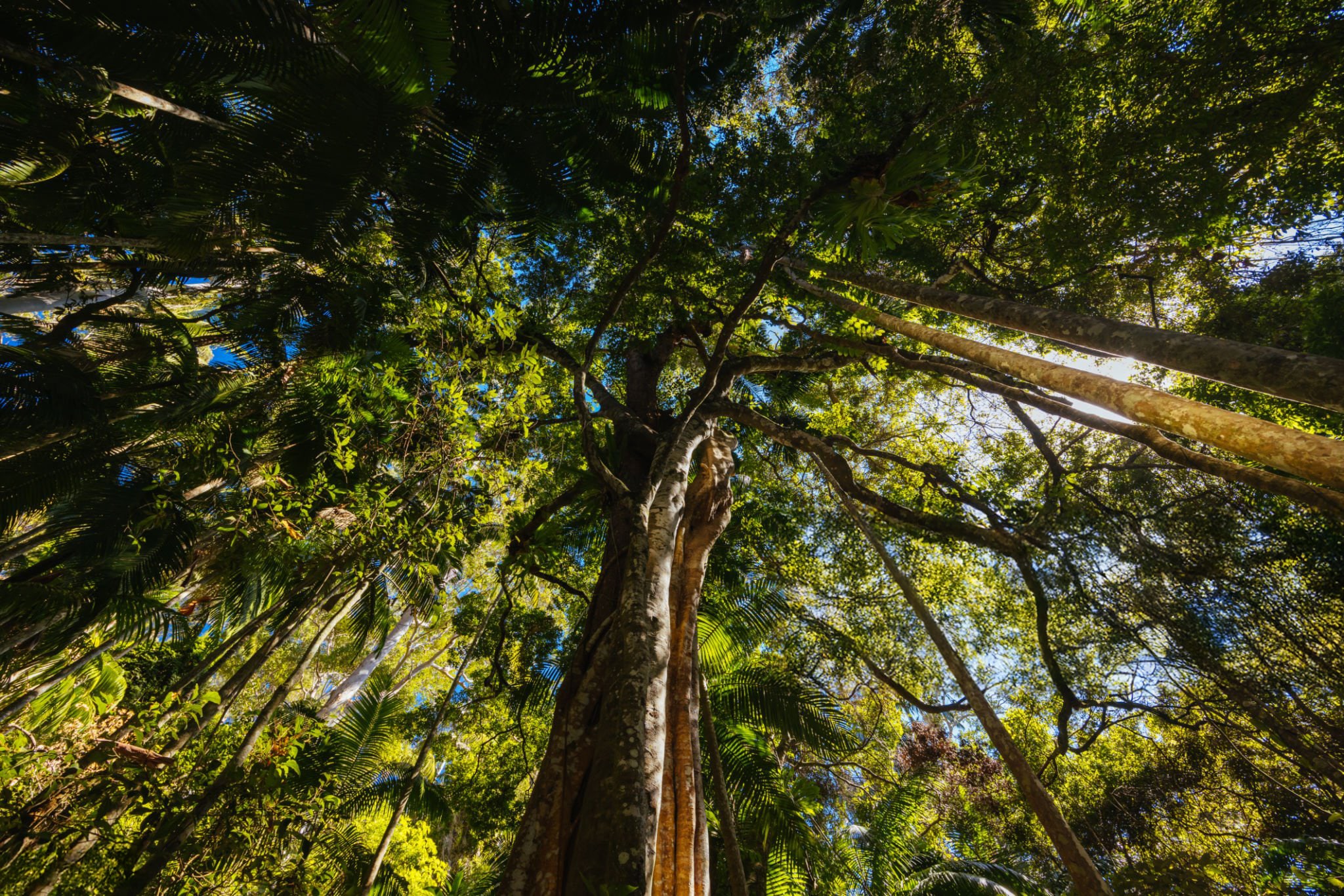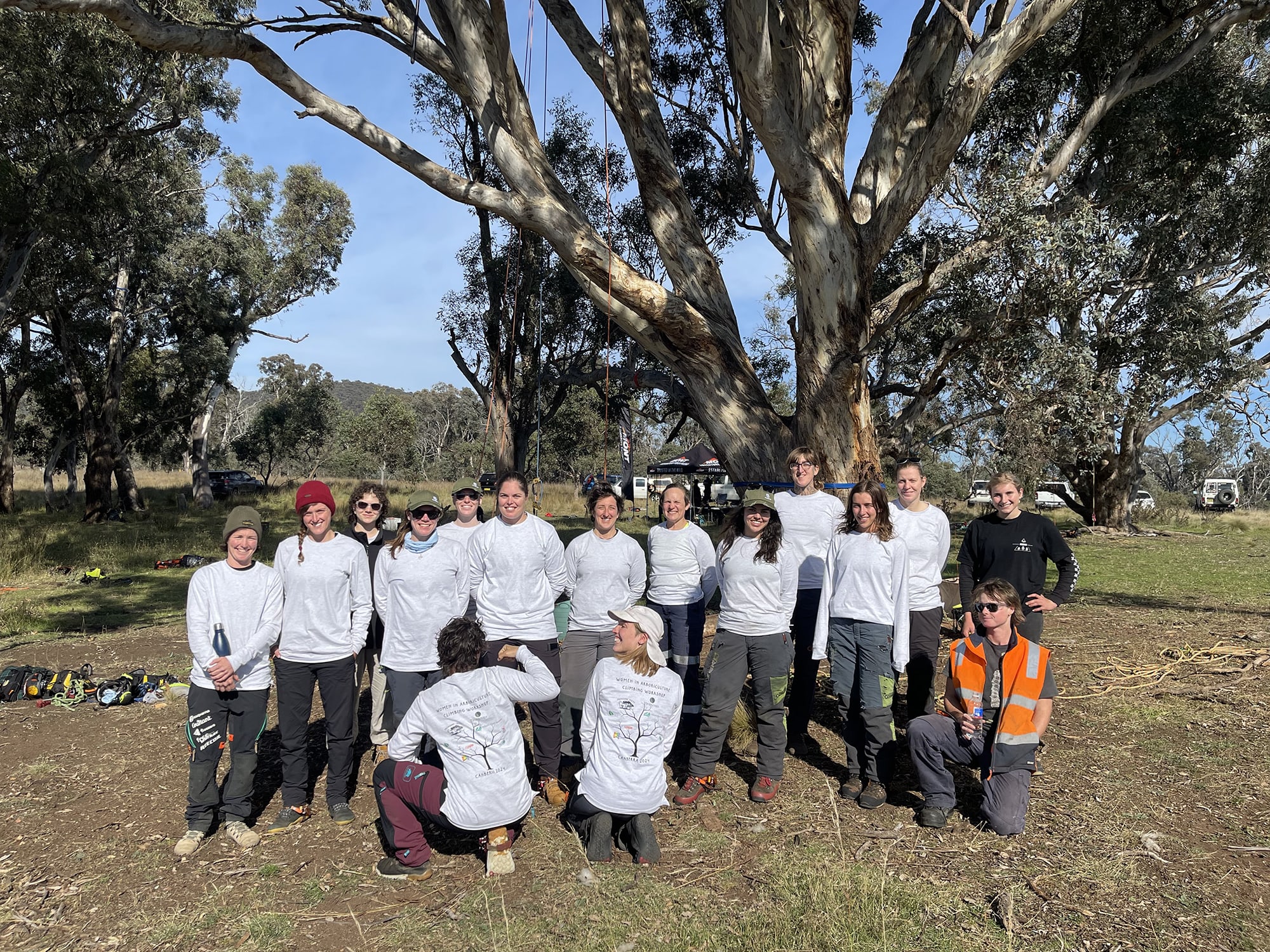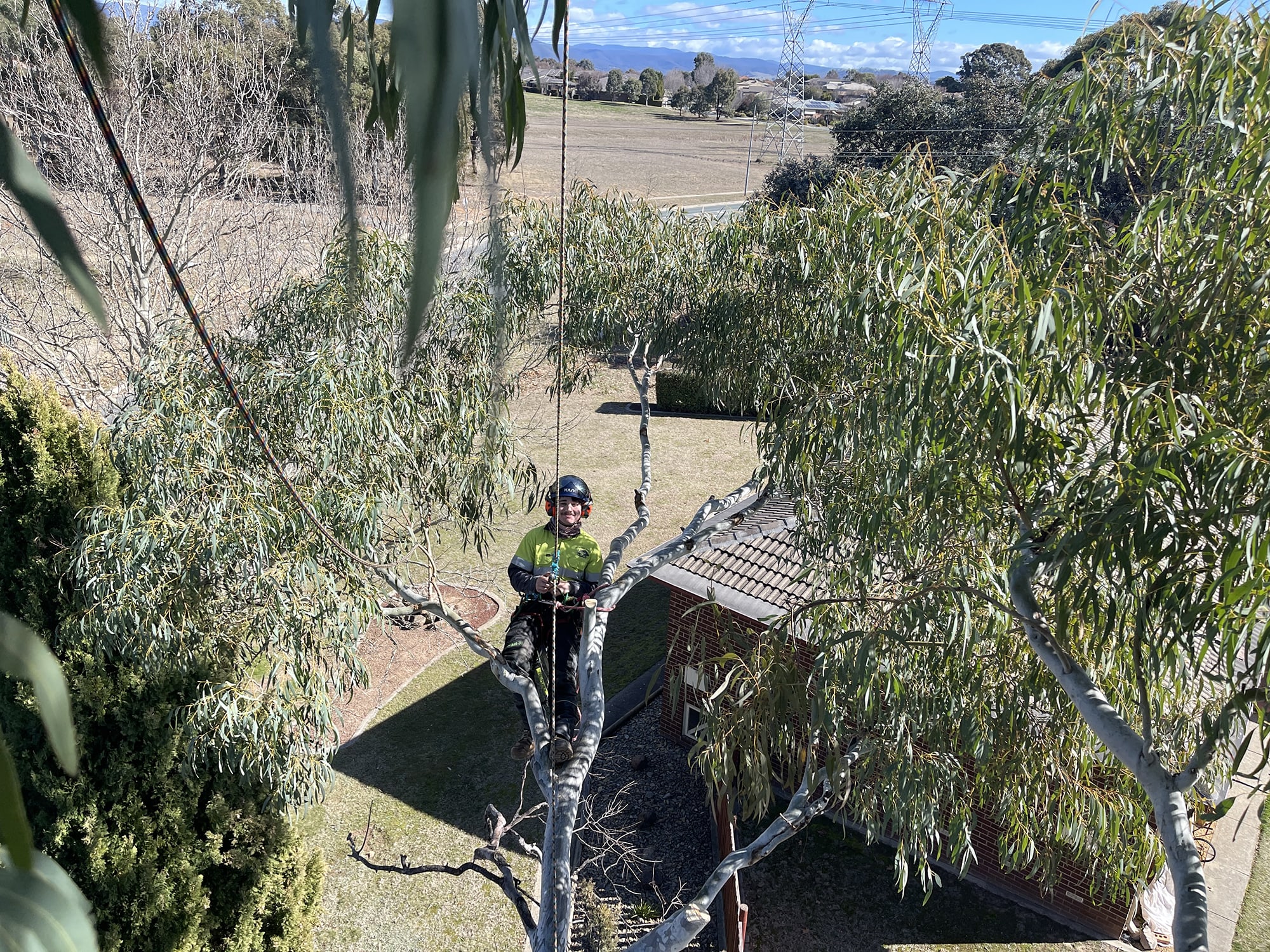With Australian cities facing the challenges of population growth, climate change and urban heating it is now more important than ever to recognise the critical role that a healthy urban forest plays in the livability of our built-up areas.
There is significant myth and misunderstanding about trees and tree risk that threatens the existence of our urban forests. Clashes occur when we bring our built infrastructure close together with our living infrastructure. Issues such as tree roots lifting structures or entering pipes, limb or whole tree failure and leaf drop being the most prevalent management issues. Tree owners and managers regularly overinflate these problems and mismanage these clashes.
Tree risk
It is fundamental to note that no tree is ever considered ‘safe’. People are exposed to risks of varying levels every day, most often these risks are accepted without a second thought. When managing trees, the value of the tree and the benefits it provides are weighed against the risk of harm it poses.
Approximately 1000 people die per year in motor vehicle accidents in Australia however, there are only 3.5 accidental tree related fatalities annually. The risk of harm associated with travelling in a motor vehicle is generally considered a 1 in 10,000 risk of harm which is universally an acceptable level of risk to impose on another person. The average person accepts this level of risk due to the benefits provided by motor vehicle transportation. The overall risk posed by trees is negligible when compared to the risks taken by people in their day to day lives.
When assessing the risk posed by specific trees, we examine the likelihood x consequence. To calculate this, the user considers how likely the failure is to occur and the consequences most likely to arise as a result. It is imperative to look at the typical or most likely outcome and never the worst-case scenario. If we measured all risk by the worst-case scenario, we would have no trees (or stairs or cars).
When assessing tree risk, we consider several aspects:
- What part of the tree is most likely to fail?
- What is in the target zone?
- How often is the area occupied?
- How much more likely is this tree to fail when compared to other trees?
- What is the most likely consequence or outcome of the failure?
- Is the cost of mitigation worth the reduction of risk?
- Does the chosen mitigation method reduce or remove the benefits provided by the tree?
- What risk is the tree owner willing to accept?
Several tree specific risk assessment tools exist. They consider internationally recognised levels of risk tolerance and provide decision-making framework to balance the benefits of the tree, the risk posed by the tree and the cost of mitigation. Use of these tools allows a tree owner to demonstrate that they have applied reasonably practicable steps to manage the risk posed by their trees. These tools are peer-reviewed, internationally accepted and recognised, and widely used in Australia by both public and private organisations.
These tree assessment tools vary in method and application but usually involve:
- identifying the target – whether that is property, vehicle speed for trees over roadways or pedestrian occupancy (number of pedestrians and/or exposure time) i.e. what could the tree hit?
- identifying the size of the part most likely to fail – such as the whole tree, a specific branch, or simply and most commonly small diameter branches and branchlets during a wind or storm event; and
- estimating the probability of failure – this requires the user to refer to their industry experience and estimate how likely this part of the tree is to fail in the coming year. This estimation is made considering an average tree with average defects as a benchmark.
According to the Australia Bureau of Statistics, there were 316 deaths registered in 2008 from people falling because of slipping, tripping and stumbling; a much more likely daily occurrence than accidental tree failure. Comparatively, there are on average 3.5 deaths registered as accidental tree-related fatalities annually, with the highest being 5 deaths in 2015. Tree related fatalities from trees in private residential gardens is even less than this.
A considerable number of these 2008 falls are associated with the use of stairs. To minimise the risk posed by stairs things such as lighting, rain protection, handrails and engineering standards, such as required dimensions are applied. To further assist in understanding risk and what society is willing to accept, it is worth noting the extensive placement of stairs in public spaces, many without the risk reduction features mentioned above. Most of us do not hesitate to use stairs because the risk of harm is just so low. We automatically slow down, hold the handrail (if there is one) and observe where and how we place our feet as we walk. These are usually subconscious adjustments. We continue to install and use stairs as a society.
Trees in private gardens statistically have a very low risk of harm. Between 2008 and 2019, 25 people have been killed by accidental tree failures in Australia. This excludes those killed whilst working on trees or those killed in a motor vehicle accident involving a tree. Only two, possibly up to four (as two are indeterminate although probably not residential garden trees) of those 25 fatalities were caused by trees in private gardens. This represents an average of 0.2 to 0.4 fatalities per year from such trees (Hartley & Chalk 2019). This is largely due to the amount of time private gardens are unoccupied across a calendar year. Residential gardens are broadly considered very low traffic areas and residential garden trees are considered very low risk structures.
When looking at tree risk mitigation, a dollar budget can be calculated by dividing the value of a statistical life (VOSL) or the estimated property damage by the probability of failure. This results in the acceptable amount of money to be spent annually to mitigate that risk. The VOSL in Australia is approximately $4,000,000. The average probability of failure for a tree with a slightly higher probability of failure than the average tree with average defects is between 1/100K and >1/1M liklihood of failing in the next 12 months. This means that spending more than $40 annually on mitigating the risk of harm to human life for the average tree is inappropriate.
Appropriate mitigation strategies for this level of risk would simply and inexpensively be periodic inspection and, if possible, avoiding the target areas of trees during strong wind or storm events. Given a qualified arborist consultation is upwards of $200, it would be appropriate to monitor the condition of the tree yourself and only seek professional assessment every 3 to 5 years or if something significantly changed with the tree.
Elimination of all risk is impossible. As the British Medical Association states, ‘We accept many risks, such as chest x-rays or driving to work, because the benefits in so doing are immediately obvious … But if we perceive risks as higher than they really are, then we may find ourselves foregoing benefits quite unnecessarily’.
Benefits of trees
It is critical that we do not disregard or overlook the widespread benefits provided by trees when we make decisions about urban tree risk and tree management. Trees provide extensive benefits to both individual tree owners and their neighbourhoods as well as our communities more broadly. Some of the functions of trees and the reported benefits are well-known and others may surprise you.
Environmental & ecological benefits
The environmental benefits of trees are well-known and well-studied. We know that trees produce oxygen and combat the greenhouse effect through carbon sequestration. They help control temperature and reduce noise. Trees slow the movement of water across the soil surface reducing stormwater run-off and erosion. They reduce salinity and function as a filter improving water quality. They filter the air by absorbing polluting gases, chemicals, odours and particles thus improving air quality.
The presence of trees promotes biodiversity and provides habitat and a food supply for wildlife, particularly our native animals and insects. Tree hollows are of noteworthy value for Australia’s hollow reliant birds and arboreal species of mammals; these are in very short supply in our urban areas.
Without trees, our urban environments would be challenging and unhealthy places to live. In short, trees are good for the environment.
Psychological and physical health of humans
Trees promote well-being. People are happier, experience significantly higher well-being and show significantly lower mental distress when they live in areas with greater amounts of green space. Individuals living in ‘greener’ buildings report more social activities, more visitors, know more of their neighbours and have stronger feelings of belonging.
Trees inspire physical activity. Residents living in areas with more green space are more than three times more likely to be physically active and to live longer. Patients in hospital, regardless of the ward type or country, recover more quickly in wards that offer a view of greenery that includes trees. These patients require less pain medication, have shorter hospital stays and experience fewer post-surgical complications.
Through a variety of means, trees promote and improve the psychological and physical health of humans.
Benefits to children
Trees provide fun play opportunities for children through activities like, swinging, climbing and building tree houses. Where children spend hours outdoors, trees provide shade protection from harmful ultra-violet rays. Tree-lined streets lower the risk of children developing asthma and asthma symptoms.
Children with attention deficit hyperactive disorder (ADHD) experience a relief of symptoms and can concentrate better following exposure to green areas with trees. Greener schools and childcare centres lead to reduced sick days, increased physical fitness, increased concentration and increased self-discipline.
The planting of trees by children encourages early environmental custodianship that they carry with them into adulthood. Living amongst trees makes children healthier and happier.
Aesthetic & sociological value
Trees create a sense of place and sense of scale. They provide spatial structure, evoke emotional attachment and memory, embed cultural identity and shape the sensory experience of environments.
Trees can provide a living screen and mask unsightly outlooks, add beauty and improve views.
Tree canopies boost the market value of homes, and the presence of trees can improve the value of neighbouring properties. Studies show that trees increase property values on average by 9% but this can increase up to 15% when large canopies of adjacent trees interlock, such as an avenue of street trees stretching up and over the road.
Trees have inspired the work of artists for millennia. They mark the seasons, they tell us when it is spring, summer, autumn or winter and are ever changing and growing becoming a work of art of their own. They are used symbolically to celebrate Christmas, commemorate people or significant dates, represent history and tell a story about past environmental and climactic conditions.
The presence and beauty of trees is invaluable. They make society a better and more meaningful place to be.
Commercial value
The presence of trees translates into increased financial returns in commercial settings. Trees attract customers and enhance tourism by providing a good impression for them.
Shoppers tend to linger longer with trees creating a sense of security and quality for customers, as well as shading in the warmer months. Well-treed businesses differentiate themselves from competitors, creating a competitive edge. Shoppers claim they are willing to travel further distances to shop and willing to spend 9-12% more on goods and services in central business districts that have high quality tree canopy.
Trees can be a source of medicine, fuel, building materials and craft wood. Timber, fruit and other products harvested from residential properties and community orchards can be sold, thus providing income. Trees are simply good for business.
Urban infrastructure savings
Trees reduce heating and cooling costs through shading and the release of water vapour to provide a thermal buffer and regulate extreme temperatures. The presence of trees throughout our built-up areas breaks up the urban “heat islands” through direct shading and cooling of the air as it moves through the canopies.
Shade from trees helps to prolong the life of city pavements and roads and reduces the need for resurfacing. In car parks, the cooling effect of trees reduces the evaporative hydrocarbon emissions released from the tanks and hoses of parked vehicles. They can also function as a privacy screen and muffle sound between properties or structures. Trees provide many practical and financial benefits to our built infrastructure and cityscapes.
Community safety benefits
Trees improve neighbourhood safety. Residents with higher amounts of nearby nature report fewer violent and minor crimes, and fewer incivilities. Studies show 48% fewer property crimes and 56% fewer violent crimes in well-treed communities. A survey in a Californian community found that 90% of its property crimes had occurred in areas without vegetation.
This reduction in crime is due to the increase in social connectedness and the psychological benefits, such as reduced stress and anger, of being near trees. In addition to this, the presence of trees increases surveillance and discourages criminals, as the ‘green and groomed’ appearance of a property is a cue that the owners and residents care about a property and watch over it and each other.
Further, inner city families with trees and greenery in their immediate outdoor surroundings have safer domestic environments than families who live in areas that are barren of street trees and nature.
There is a demonstrated connection that trees ease poverty’s burden in inner city neighbourhoods by reducing mental fatigue therefore enhancing residents’ effectiveness.
Physically, trees also aid in traffic control by separating pedestrians from vehicles. Tree lined suburban streets also cause a reduction in individual driving speed, making roads safer for all users. Urban spaces with mature trees are safer places to live.
Conclusion
Many tree owners fail to recognise that a tree on their property forms part of the collective urban forest. They can have tunnel vision for the concern or inconvenience they experience related to the maintenance or presence of their tree. Many of the benefits provided by trees as outlined in this article are not well-known or appreciated.
A healthy urban forest is necessary for human and societal health and well-being. By choosing to live in urban spaces, we are choosing to live amongst trees. When compared to the risk posed by trees, other risks we unconsciously and consciously expose ourselves to daily are far greater, but we choose to accept them due to the recognised benefits they provide us. When we choose to live amongst trees, we choose to accept some level of risk.
Christine Rampling is an AQF Level 5 arborist turned Bachelor of Laws student inspired by her work as an expert witness in the courts in tree-related in disputes.


